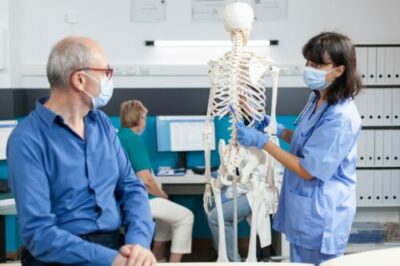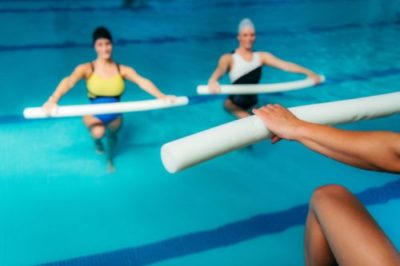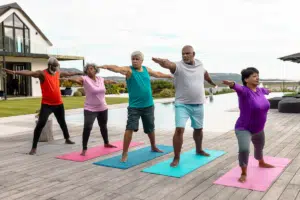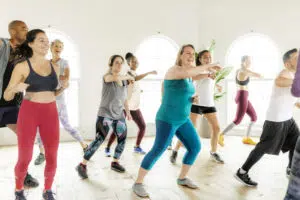The Value of Health, Chiropractic Explanation
Get Healthy and Pain Free with Chiropractic Adjustments
Chiropractic is a health care profession that focuses on disorders of the musculoskeletal and nervous systems, and the effects of these disorders on general health. Doctors of chiropractic—often referred to as DCs, chiropractors or chiropractic physicians—practice a drug-free, hands-on approach to health care that includes patient examination, diagnosis and treatment. In addition to their expertise in spinal manipulation/adjustment, doctors of chiropractic have broad diagnostic skills and are also trained to recommend therapeutic and rehabilitative exercises, as well as to provide nutritional, dietary and lifestyle counseling.
For Acute and Chronic Pain Chiropractic Success and Research
Patients who saw a chiropractor as their initial provider for low back pain (LBP) had 90% decreased odds of both early and long-term opioid use.
Kazis et al. (2019), BMJ Open
“Given that most patients with acute or subacute low back pain improve over time regardless of treatment, clinicians and patients should select nonpharmacologic treatment with superficial heat (moderate-quality evidence), massage, acupuncture, or spinal manipulation (low-quality evidence). If pharmacologic treatment is desired, clinicians and patients should select nonsteroidal anti-inflammatory drugs or skeletal muscle relaxants (moderate-quality evidence).”
American College of Physicians (2017)
“For patients with chronic low back pain, clinicians and patients should initially select nonpharmacologic treatment with exercise, multidisciplinary rehabilitation, acupuncture, mindfulness-based stress reduction (moderate-quality evidence), tai chi, yoga, motor control exercise, progressive relaxation, electromyography biofeedback, low-level laser therapy, operant therapy, cognitive behavioral therapy, or spinal manipulation (low-quality evidence).”
American College of Physicians (2017)
“Many treatments are available for low back pain. Often exercises and physical therapy can help. Some people benefit from chiropractic therapy or acupuncture.”
Goodman et al. (2013), Journal of the American Medical Association
“Chiropractic Manipulative Therapy in conjunction with standard medical care offers a significant advantage for decreasing pain and improving physical functioning when compared with only standard care, for men and women between 18 and 35 years of age with acute low back pain.”
Goertz et al. (2013), Spine
In Comparison to Other Treatments
Chiropractic users had 64% lower odds of receiving an opioid prescription than non users.
Corcoran et al. (2019) Pain Medicine
The results of a clinical trial showed that chiropractic care combined with usual medical care for low back pain provides greater pain relief and a greater reduction in disability than medical care alone. The study, which featured 750 active-duty members of the military, is one of the largest comparative effectiveness trials between usual medical care and chiropractic care ever conducted.
Goertz et al. (2018) JAMA Open Network
“Manual-thrust manipulation provides greater short-term reductions in self-reported disability and pain compared with usual medical care. 94% of the manual-thrust manipulation group achieved greater than 30% reduction in pain compared with 69% of usual medical care.”
Schneider et al (2015), Spine
“Reduced odds of surgery were observed for…those whose first provider was a chiropractor. 42.7% of workers with back injuries who first saw a surgeon had surgery, in contrast to only 1.5% of those who saw a chiropractor.”
Keeney et al (2012), Spine
Cost Effectiveness
Findings from a study utilizing data from the North Carolina State Health Plan collected between 2000-2009 show that care by a doctor of chiropractic (DC) alone or DC care in conjunction with care by a medical doctor (MD) incurred “appreciably fewer charges” for uncomplicated lower back pain than MD care with or without care by a physical therapist.
Hurwitz et al. (2016), Journal of Manipulative and Physiological Therapeutics
For Headaches
“Six to eight sessions of upper cervical and upper thoracic manipulation were shown to be more effective than mobilization and exercise in patients with cervicogenic headache, and the effects were maintained at 3 months.”
Dunning et al. (2016) BMC Musculoskeletal Disorders
“There was a linear dose-response relationship between spinal manipulative therapy (SMT) visits and days with cervicogenic headache (CGH). For the highest and most effective dose of 18 SMT visits, CGH days were reduced by half and about 3 more days per month than for the light-massage control.”
Haas et al. (2018) Spine
“On average, spinal manipulative therapy plus home exercise and advice (HEA) resulted in better clinical outcomes and lower total societal costs relative to supervised rehabilitative exercise plus HEA and HEA alone… .”
Leininger et. al. (2016) Spine
For Neck Pain
In a study funded by NIH’s National Center for Complementary and Alternative Medicine to test the effectiveness of different approaches for treating mechanical neck pain, 272 participants were divided into three groups that received either spinal manipulative therapy (SMT) from a doctor of chiropractic (DC), pain medication (over-the-counter pain relievers, narcotics and muscle relaxants) or exercise recommendations. After 12 weeks, about 57 percent of those who met with DCs and 48 percent who exercised reported at least a 75 percent reduction in pain, compared to 33 percent of the people in the medication group. After one year, approximately 53 percent of the drug-free groups continued to report at least a 75 percent reduction in pain; compared to just 38 percent pain reduction among those who took medication.
Bronfort et al. (2012), Annals of Internal Medicine
Care for Seniors
Older Medicare patients with chronic low back pain and other medical problems who received spinal manipulation from a chiropractic physician had lower costs of care and shorter episodes of back pain than patients in other treatment groups. Patients who received a combination of chiropractic and medical care had the next lowest Medicare costs, and patients who received medical care only incurred the highest costs.
Weeks et al (2016), Journal of Manipulative and Physiological Therapeutics
“This study provides evidence of a protective effect of chiropractic care against 1-year declines in functional and self-rated health among Medicare beneficiaries with spine conditions, and indications that chiropractic users have higher satisfaction with follow-up care and information provided about what is wrong with them.”
Weigel et. al. (2014) Journal of Manipulative and Physiological Therapeutics
Senior Care and Medicare
Older Medicare patients with chronic low back pain and other medical problems who received spinal manipulation from a chiropractic physician had lower costs of care and shorter episodes of back pain than patients in other treatment groups. Patients who received a combination of chiropractic and medical care had the next lowest Medicare costs, and patients who received medical care only incurred the highest costs.
Weeks et al (2016), Journal of Manipulative and Physiological Therapeutics
For Low Back Pain
Low back pain initiated with a doctor of chiropractic (DC) saves 20 to 40 percent on health care costs when compared with care initiated through a medical doctor (MD), according to a study that analyzed data from 85,000 Blue Cross Blue Shield (BCBS) beneficiaries in Tennessee over a two-year span. The study population had open access to MDs and DCs through self-referral, and there were no limits applied to the number of MD/DC visits allowed and no differences in co-pays. Researchers estimated that allowing DC-initiated episodes of care would have led to an annual cost savings of $2.3 million for BCBS of Tennessee. They also concluded that insurance companies that restrict access to chiropractic care for low back pain treatment may inadvertently pay more for care than they would if they removed such restrictions.
Liliedahl et al (2010), Journal of Manipulative and Physiological Therapeutics
Articles and Videos source: https://www.acatoday.org/research/evidence-in-action/
The American Chiropractic Association and Palmer College of Chiropractic partnered to provide the following series of articles and videos that translate how the findings of research studies and other evidence can be applied in clinical practice.
Sensitization (Part 1): Characteristics and Implications
By Anna-Marie Schmidt, MM, DC, and Robert Vining, DC, DHSc
Sensitization (Part 2): Management Strategies
By Anna-Marie Schmidt, MM, DC, and Robert Vining, DC, DHSc
“Chronic Pain: Screening for Potential Psychological Factors”
By Anna-Marie Schmidt, MM, DC, and Robert Vining, DC, DHSc
“Best Practice Recommendations: Translating Evidence Into Action”
By Anna-Marie Schmidt, MM, DC, and Robert Vining, DC, DHSc
“Social Factors: A Sometimes-overlooked Opportunity”
By Anna-Marie Schmidt, MM, DC, and Robert Vining, DC, DHSc
“Developing Person-centeredness: A Continual Process”
By Anna-Marie Schmidt, MM, DC, and Robert D. Vining, DC, DHSc
“Choosing Outcomes Assessments for Back Pain”
By Kara Shannon, DC, and Zacariah Shannon, DC, MS
“Improving Interprofessional Communication”
By Heather Mai-Roecker, DC, ARNP, and Christopher B. Roecker, DC, MS
“Collaboration for Low Back Pain Treatment in Older Adults”
By Zacariah Shannon, DC, MS
> Listen to the author discuss the article in this video.
“Does Spinal Manipulation Affect Central Nervous System Pain Mechanisms?”
By Zacariah Shannon, DC, MS, Robert Vining, DC, and Stephen Onifer, PhD
> Listen to the author(s) discuss the article in this video.
“Enhancing a Biopsychosocial Approach”
By Robert Vining, DC, and Yasmeen Khan, DC
“Interpreting ‘Quality’ and ‘Strength’ in a Practice Guideline”
By Robert Vining, DC, and Zacariah Shannon, DC, MS





























